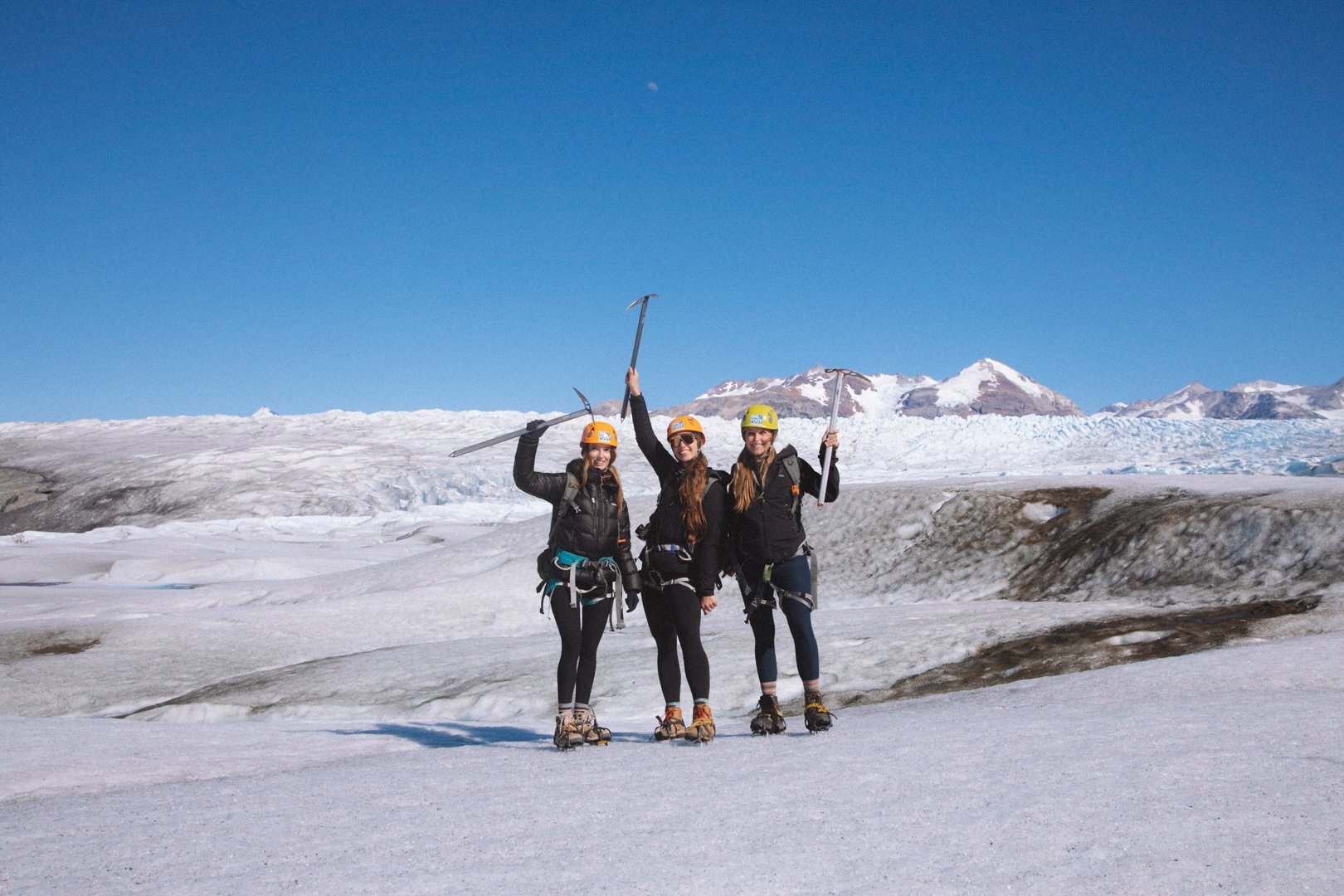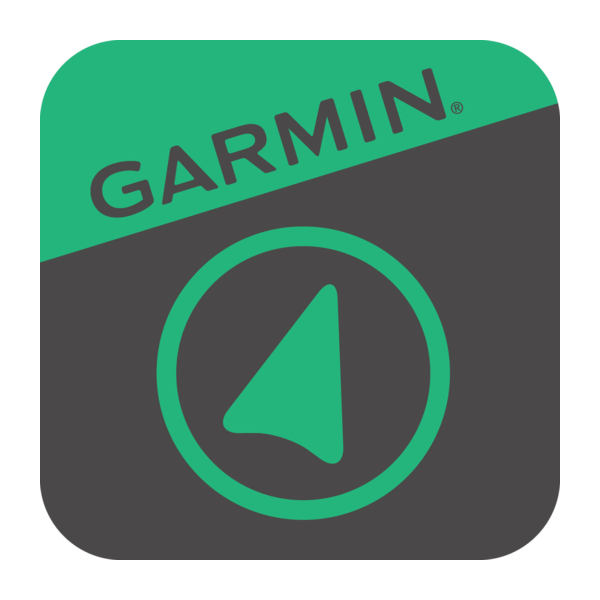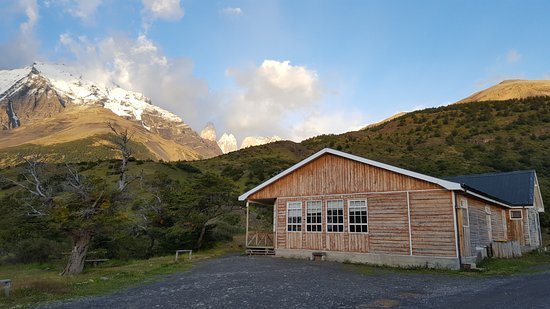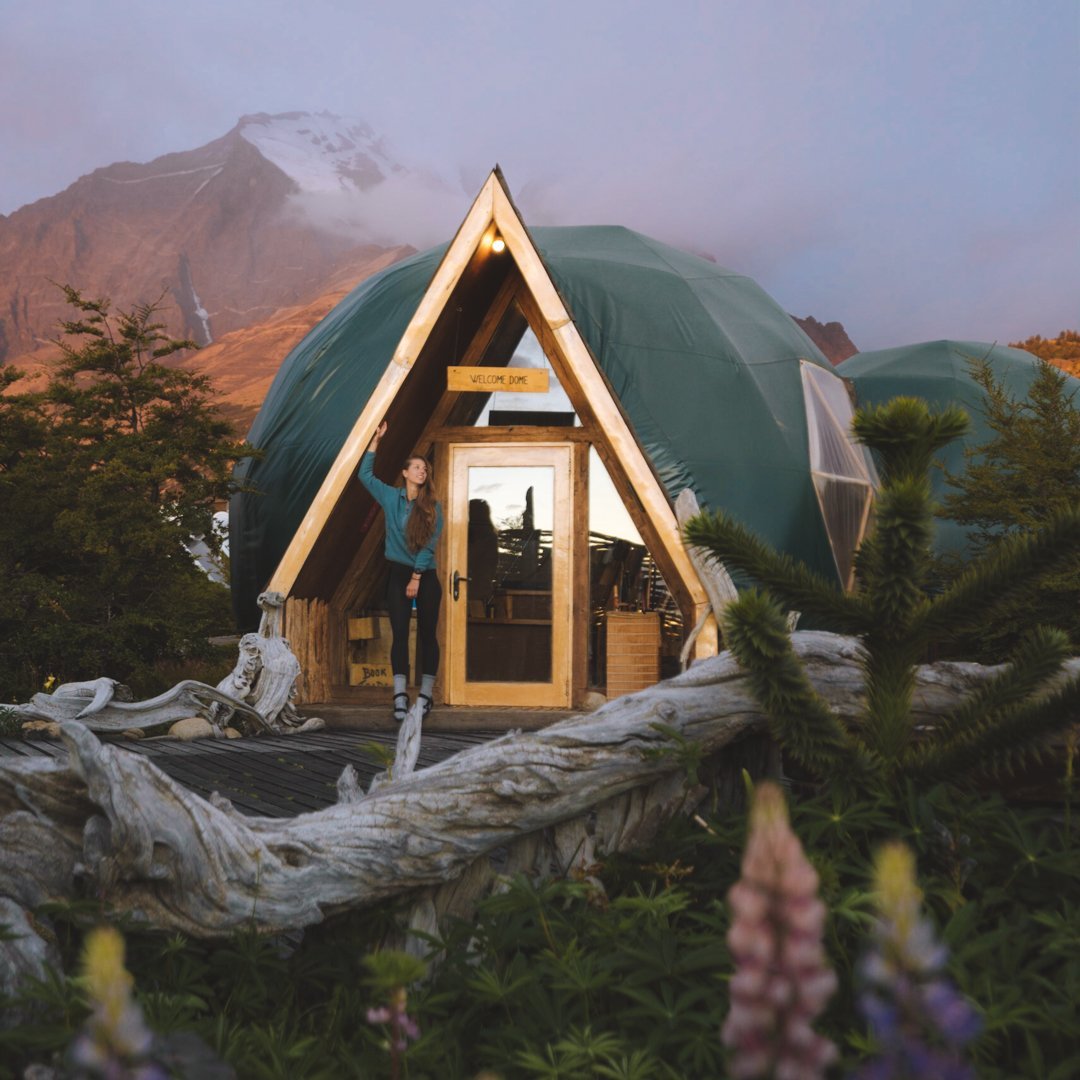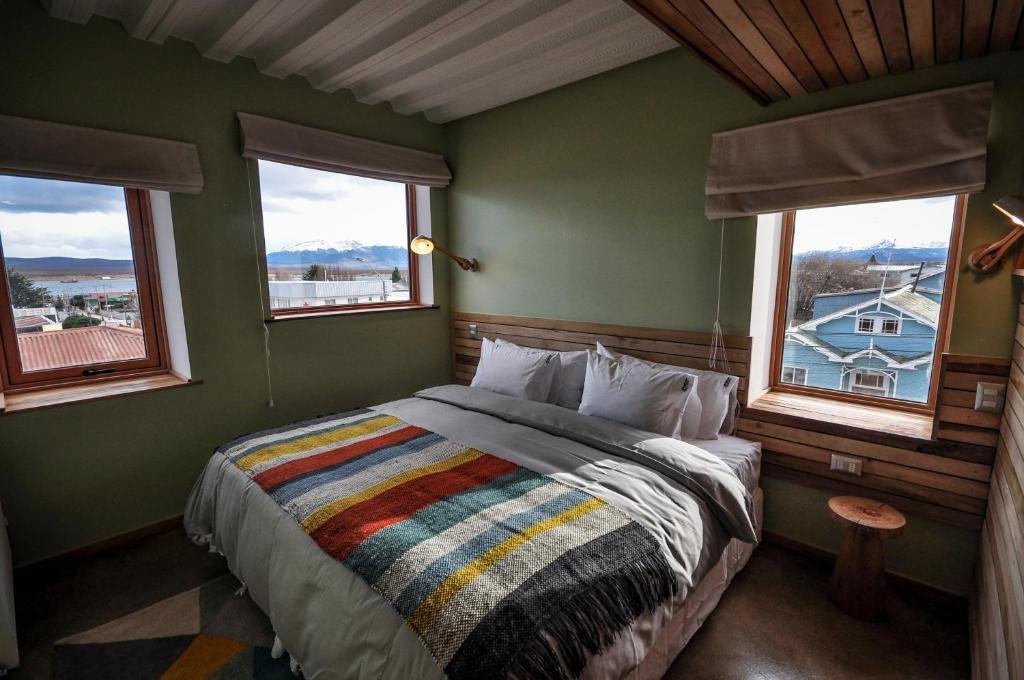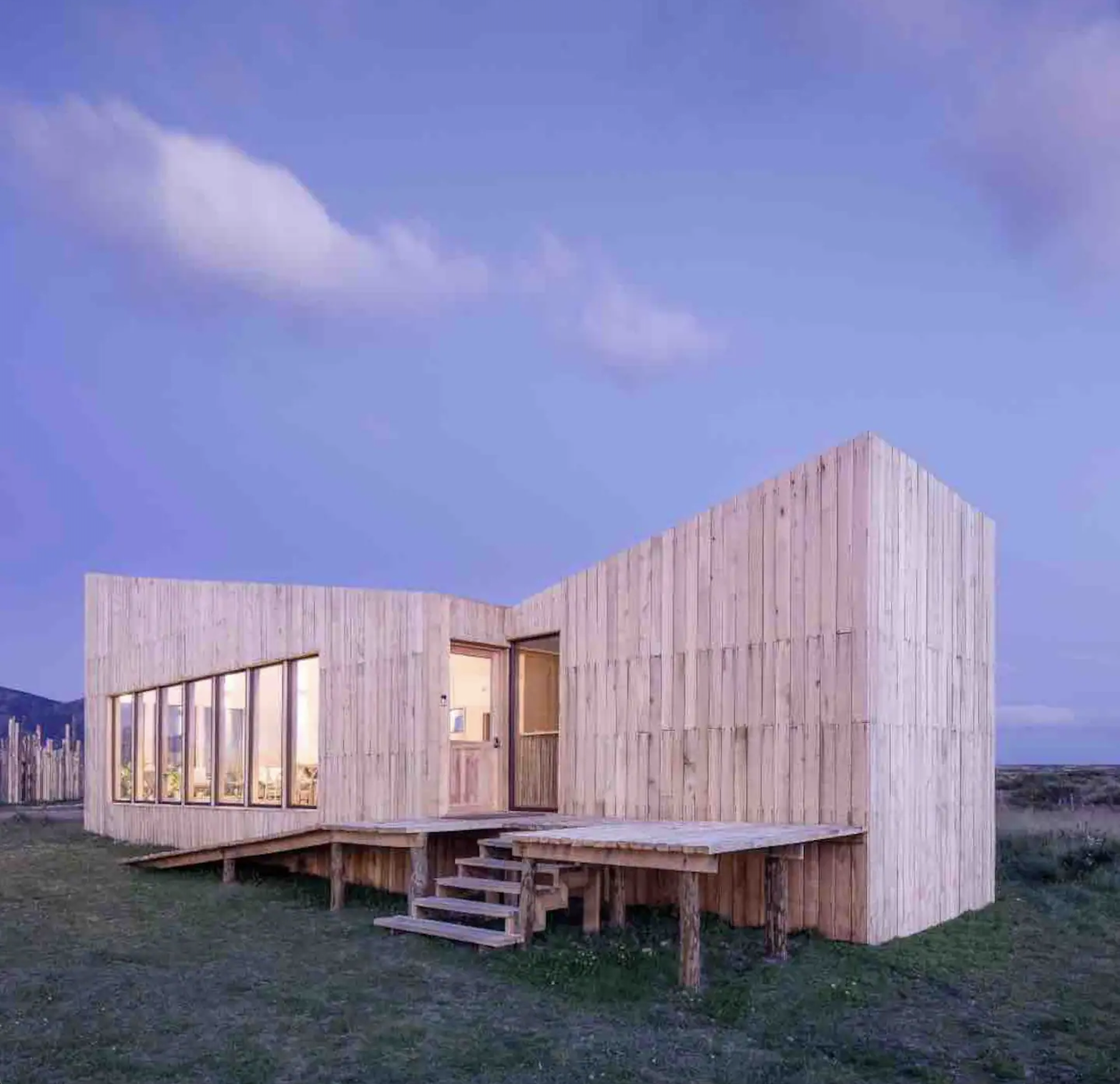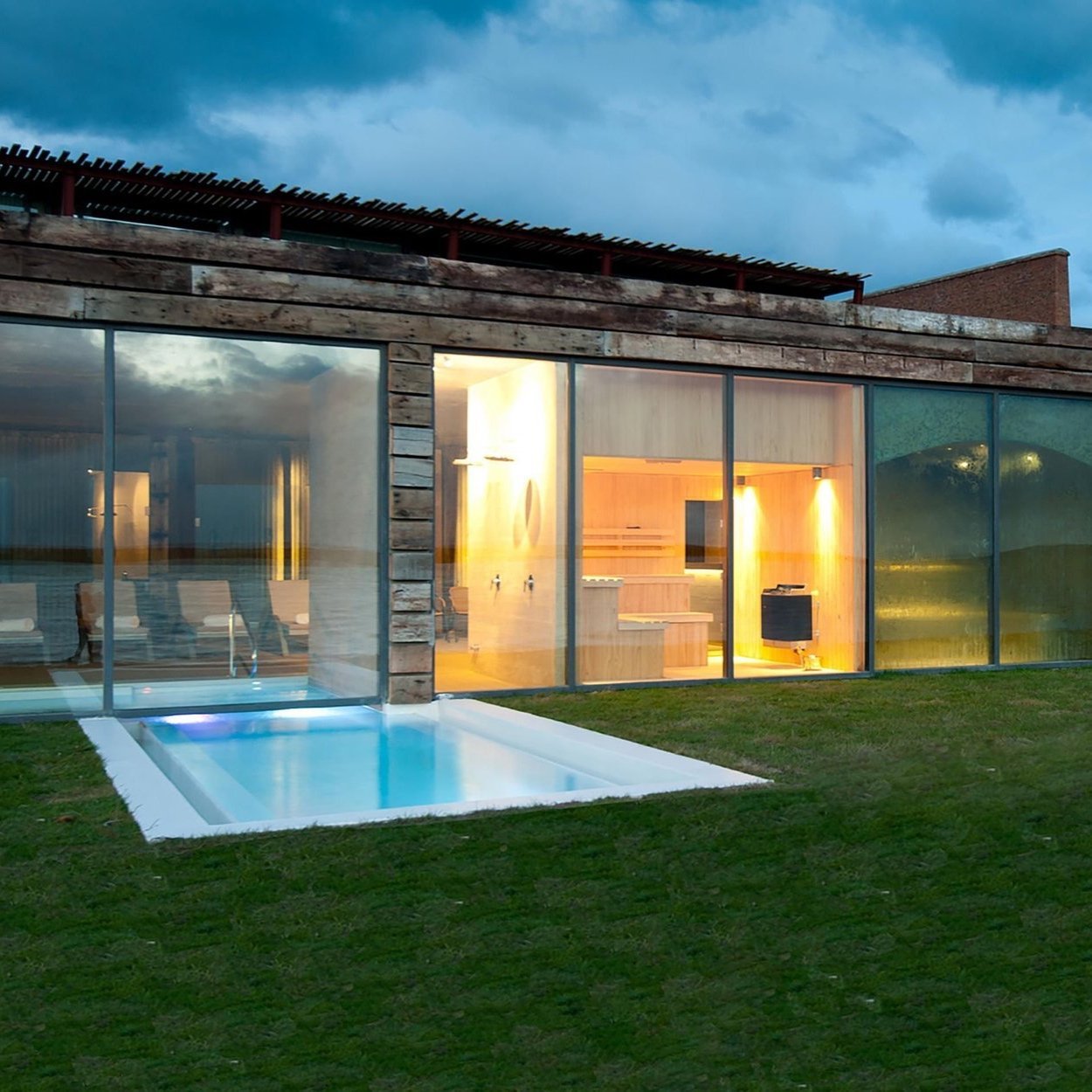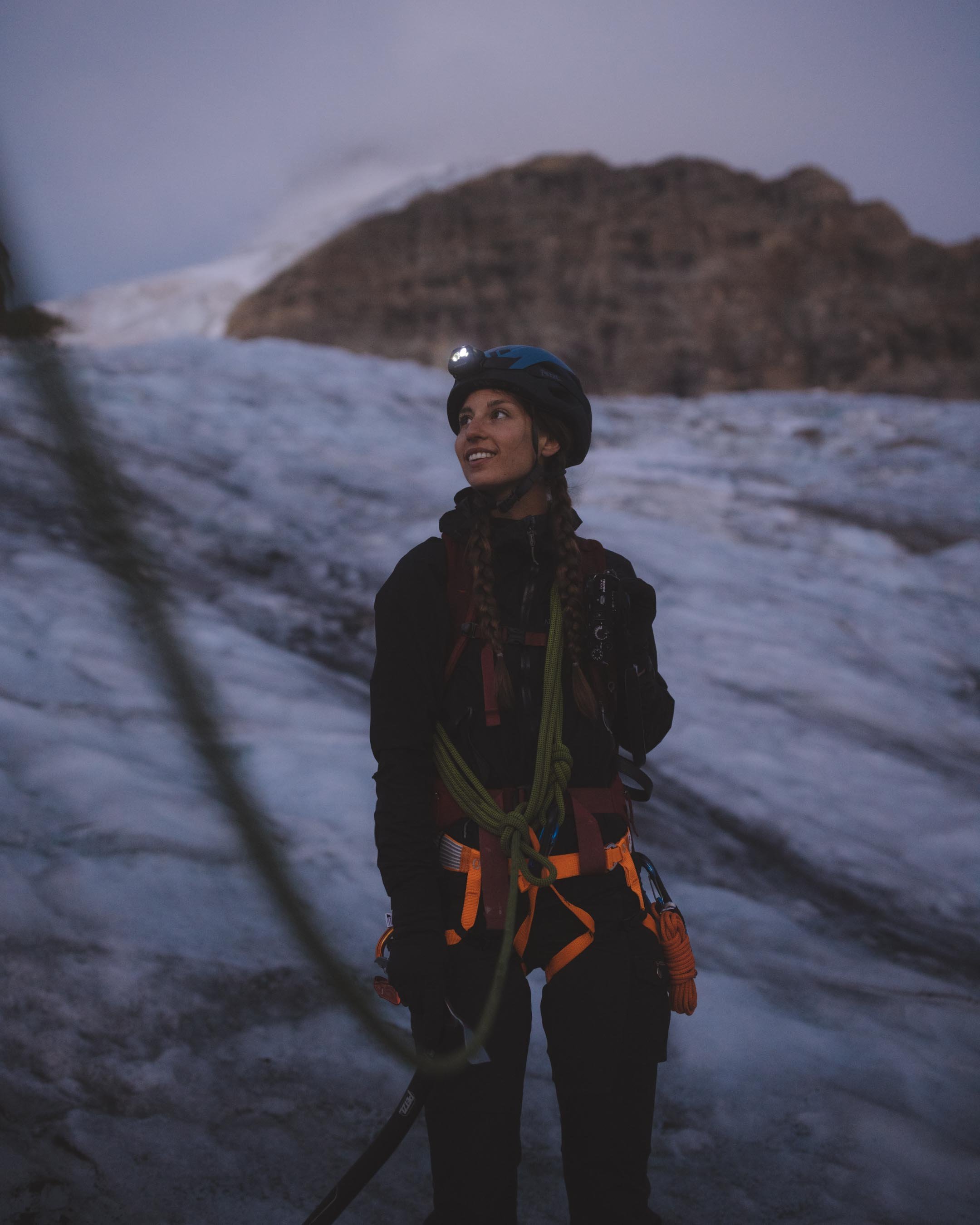Solo Backpacking the O-Circuit in Torres del Paine Patagonia (Chile)
I first visited Patagonia in April of 2018 - spending a few months in the region hiking, camping - and mostly waiting for good weather to be able to hike and camp. On that trip the W-Trek was what we had set our sights on. But after two weeks of waiting for a weather window and three failed attempts at a day trip up to the Base of the Towers… we realized that the season would soon be over. So, we shot our shot and boarded the catamaran for Glacier Grey. We spent the night in our tent and in the morning hiked to our second campground of the trek… and boarded the ferry back. We were defeated by the late season Patagonia rain, wind and snow. So in 2022 when a window opened up of perfect weather (and an allowance for foreigners to visit Chile). I booked my tour of Torres del Paine - this time solo and this time adding on to the W and completing the O-Circuit. Eight days hiking around the Cordillera del Paine. This is my trip, and everything I wish I knew before I boarded my plane to Patagonia.
What is the o-Circuit?
The Torres del Paine "O" Circuit (6–10 days) is the full loop around the Cordillera del Paine (as seen above in red). It is yet another of Lonely Planet’s Ten Best Hikes in the world. This is my third on the list (my first being the Kalalau Trail in Hawaii and the second the Haute Route in the European Alps) and now I do feel slightly committed to slowly working my way through the list. This is an extended version of the W-Trek (blog to follow soon) that takes you through remote Patagonia wilderness.
This, in contrast to the Haute Route, is one set route with very few variations (I noted the four additional hikes and activities I found as “side quests” in the overview of my hike described in this blog). The O-Circuit in its essence is:
Location: Torres del Paine National Park, Chile
Distance: 73.7 miles / 119 km
Total Elevation Gain: 16, 309ft / 4,971 meters
Days to Complete: 6-11 (9 is most common)
Difficulty: Challenging
Best Time to Hike: December-March
Typical Weather: Unpredictable - high winds, rain, snow and sunburn can all be expected.
Hiker Traffic: Moderat (back) Heavy (front/W)
Huts/Cabins/Hotels: Yes
Cell Service: No
Wifi: In some huts, for purchase.
In this blog
My eight day solo o-Circuit itinerary
Warm Up Hike
18.3km/11.4 miles return
My first trip to Torres del Paine in 2018 I attempted multiple times to visit the base of the towers to no avail. So I opt’ed to book in an extra attempt and before starting the O-Circuit I made a sunrise hike up to the base of the towers from Hotel los Torres (you can also start from Refugio Torre Central, Camping Torres, Eco Camp or Refugio Las Torres/ Camp Norte all located in the same area). I left the hotel at 3:00am which was the recommended time to leave - I was a little bit too fast and ended up arriving way too early. Remember to bring layers. This hike is well marked, but you will want to ensure you have a headlamp with you and it is very gusty so I recommend not bringing a ball cap unless it would like to join mine at the bottom of Lago Torre.
Day One
15 km/9.3 miles
Hotel Las Torres to Serón
I stayed in a hotel at the base of the towers and, (as you know) did a double take of the Towers to ensure I got to see them after several failed attempts. For me this was a relatively easy and uneventful day of hiking. The first two days on the circuit I think of as more of a warm up for the reminder of my hike. A lot of grassland landscape here, very little elevation gain and loss. This was also the worst weather I had on the trip - it rained on and off and the clouds were quite low. Séron campsite was nice - it is an open field fenced in where, after your check in you make your way over to and set up camp. The ground was relatively even and most tents were set up around the perimeter as it was shielded from the elements by trees. There is a small dining area if you purchase full bars or alternatively a white canvas tent for cooking in.
Below is the typical day one itinerary:
After breakfast at the hotel in Puerto Natales, pick up a box lunch and then go to the bus terminal to take the bus at 7:00 am (we recommend being at least 10 minutes before departure) to go to Torres del Paine National Park. Ensure that you have purchased your park pass online here and have your QR code ready upon arrival. You will travel through beautiful landscapes until you reach the main entrance, Laguna Amarga, where you must register with CONAF (park rangers). Here you will transfer to “Las Torres Shuttle”, who will take you to the Visitor’s Center. Register yourself at the Cerro Paine Reserve and then follow the trail signs to Serón camping.
Day Two
18 km/11.2 miles
Serón to Dickson
Day two was longer but still with relatively little elevation gain or loss. I had downloaded an audiobook for the O-Circuit and sort of tuned into that this day. It was a pretty overcast day for me, again with on and off rain. About half way through you pass back into the National Park (from the Park Reserve) and do a check-in at the ranger station. You will get to know your passport number very well on this circuit as every check-in requires jotting down basic information such as name, citizenship, passport number, date of entry into Chile and date of commencement of the circuit. You also need to verify immigration documentations at all of these check-ins (your PID form from customs - do not lose this) and show your COVID mobility pass. Just past the ranger station I ended up having a visit from a puma on the trail - slightly unsettling as a solo camper but I waved my arms and yelled and would have picked up sticks and rocks to throw but no need - she ran off of the trail into the long grass.
Dickson campground is a lot more robust than Séron - including showers (hot water after 4pm), an indoor enclosed cooking area and a small mini mart. The Refugio is larger as well and you can go in to purchase drinks. The campground looks out over a large glacier that is actually in Argentina - I only caught glimpses of it through the clouds.
Day Three
11.8 km/7.3 miles
Dickson to Los Perros
The shortest day on the circuit and coming into my favourite part of the O. The first 10km are relatively benign, hiking through the forest. But just before arriving at the Perros campground you are greeted with the Perros Glacier. This stopped me in my tracks as I was not expecting this. The best part of the O is, in my opinion, the backside and the quiet that comes along with it. Every night you will meet up with generally the same people (I met a man from Texas who actually works for the same company I used to, two Dutch men who work in the medical field (great for remote camping) and a lovely 20-something year old named Jess who was also solo in South America for the first time). But during the day you are mostly alone - unless you chose not to be. Spending an evening with this glacial lake to myself was something I will treasure forever.
Side Quest : Puma Glacier
7km/4.3 miles return
The hike to Puma Glacier begins at the Perros Campground and is a restricted use trail. It requires river crossings and route finding capabilities as well as approval from the CONAF rangers. If you are hiking with a certified guide your guide will be able to arrange this and take you to the glacier. If you are hiking unsupported you can ask the rangers to accompany you (this was the route I took). However, they will not allow anyone to depart for the glacier after 12:00pm. If you are hoping to include this in your itinerary you will need to either leave very early (or hike fast) from Dickson to arrive early at Perros. Or alternatively, as this is my favourite part of the entire O-Circuit, spend a rest day here before continuing on and meeting up with the W-Trek - if you are thinking about taking a rest day at Grey… move it to Perros and thank me later.
Day Four
15 km/9.3 miles
Los Perros to Grey
There is a mandatory departure time of 7am from Perros. This is non-negotiable with the rangers and is made to ensure that everyone gets over the pass in a timely manner. I would say that this is the hardest day on the circuit but also one of the most beautiful. I thought that I could out-hike the sun and was planning on getting up to John Gardner Pass before sunrise, but was about 15 minutes too late. This climb is no joke, but the hike is incredible. The basin the Perros resides in is littered with glaciers and as you make your way up to the pass they, one by one, reveal themselves. Once you cross over the pass, you are greeted with the Grey Icefield. If you have never seen an ice field before, this provides a really surreal feeling.
And, it is all downhill from there… literally. An extremely steep decline brings you at eye level to GlacierGrey and there is a second CONAF checkpoint (same as day two). This campground is currently closed and under massive renovations but hopefully will be open for the 2023/24 season. After the ranger station there are three suspension bridges over the glacier before you meet up with civilization at Grey Refugio.
Side Quest: Kayak in Lagoon Grey
The Kayak expedition of about 2.5 hours departs daily at 9:00 / 14:00 / 17:00 hrs. In groups from 2 to 14 persons. In the base camp you will dressed with a neoprene suit, waterproof jacket and boots, poogies (kayak gloves), skirt, and life-jacket. In a safety briefing you will get to know your kayak, paddle, route and conditions. You do not need any kayak experience for this and are in double kayaks - a fun few hours out on the water paddling through icebergs, growlers and bergy bits.
Cost: $66.000 CLP per person(as of 2022)
This photo is from 2018 when I hiked with Michael Matti (in 2022 we were running so late that we didn’t stop to take any photos until we got to camp - but this few is incredible)
Day Five
This is where my solo circuit turned into a not-so solo trek, but for the purposes of this blog I will outline my costs based on my planned solo trip - check out my W-Trek Blog here.
11 km/6.8 miles
Grey to Paine Grande
The most notable part of this day is how busy the hike becomes. The trail is no longer one-way traffic and there are multiple points of easy access along the front side (the W) - it feels like a constant flow of people in front, behind and coming face to face with you. Day five is relatively short and I found myself constantly spinning around looking at the views I was leaving. Upon arrival to Pine Grande we bought some wifi (it was not very fast compared to other huts), I had my first shower of the circuit and we bought ramen noodles from the store. This hut was far more robust than others along the trail.
Side Quest: Ice Walk on Grey Glacier

Ice hike is approximately 5 hours (incl. Rubber boat transfer, walking onto the island called islatak to access the ice the safest way) departures are daily at 8:00 / 14:30. If you have never set foot on a glacier I highly recommend this. The tour includes a small zodiac boat ride out to the toe of the Grey Glacier through a lagoon of floating ice chunks, a professional guide who will help you find all of the best photos and seek out pools of blue water, ice bridges and crevasses, all of the gear you will need and even a small snack and tea break.
Cost: $120.000 CLP per person (as of 2022)

Day Six
25 km/15.8 miles
Paine Grande to Cuernos
The longest day on the O-Circuit. I wish we had left camp a little bit earlier, but we had no idea the views that would greet us on this day. As any photographer who has done a thru-hike can attest to that is one of the hardest parts - that most of the meals are timed during sunrise and sunset, and most of the best views you come to meet in the worst light conditions. This was one of those harder days in that regard. There were many ponds, lakes and great beaches with beautiful views on this day. There are two options for where to stay this night, Frances (slightly closer) and Cuernos (where we stayed) - CONAF also has a campground Italiano which is also closed and under renovation but would be an incredible place to stay because of its location at the junction for the French Valley.
Hike Mirador Britanico
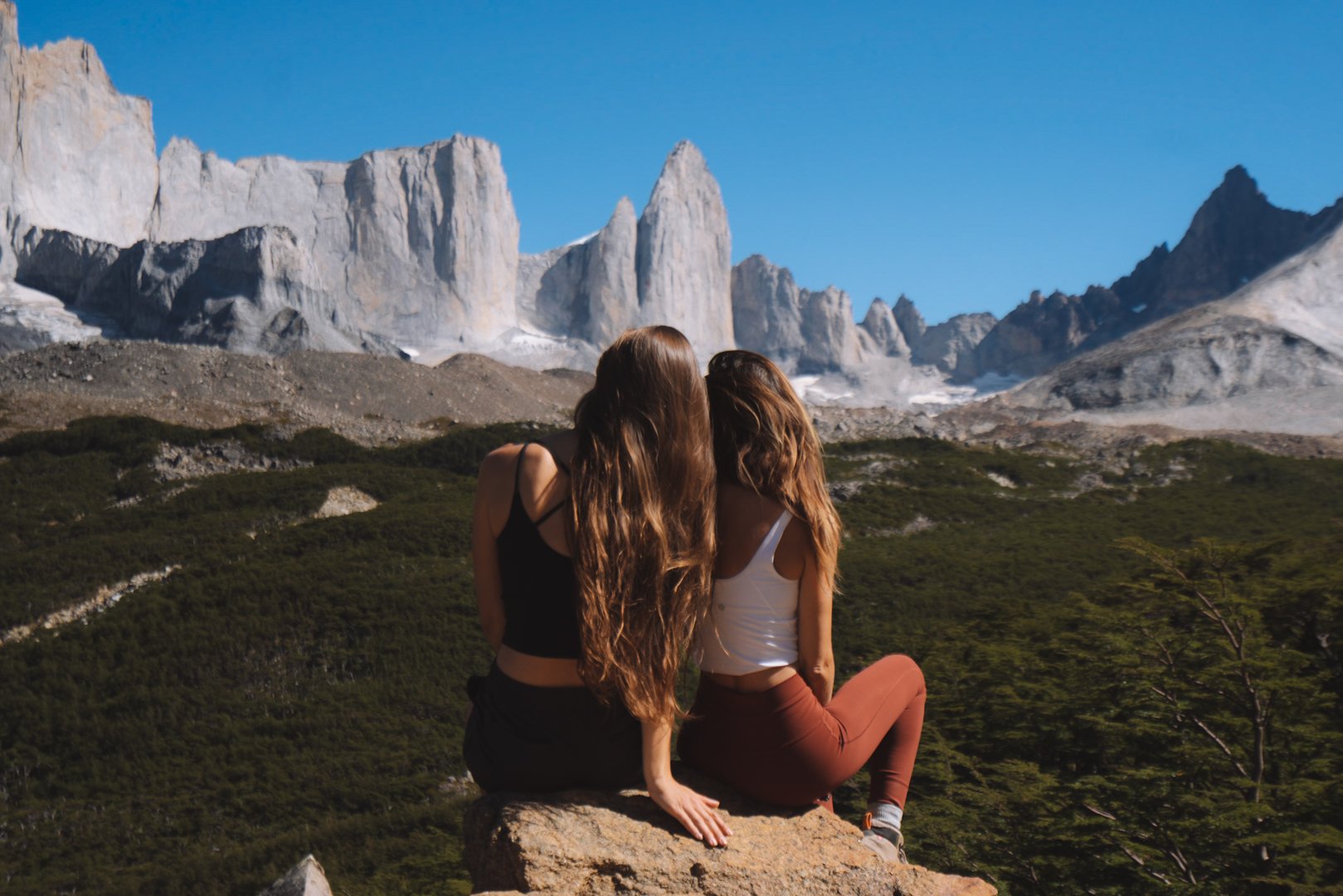
The distance of this side hike is included in the daily distance above because it is formally part of the O-Circuit - we almost skipped it because of how hot of a day it was when we were hiking and we questioned if it was worth it - it was. The added distance brings you to several viewpoints along the way and the trail is largely shaded from the sun. At the base of the valley is a ranger station where you can (and most do) drop most of your gear and bring water, your passport/money, your camera and a snack. A welcome break from the weight of a heavy backpack if you are camping. If you are looking to buy a backpacking bag for this hike I recommend something like my REI Traverse 60L with the removable brain that turns into a small daypack. Once the CONAF campgrounds re-open there is one located along this section of the hike.

Day Seven
12.8 km/8 miles
Los Cuernos to Chileno
Another day that we constantly felt were hiking the wrong way. A slower start to day seven we ate breakfast and packed up our things at a leisurely pace after hiking back about a mile to take a dip in the lake. There is some controversy as to whether this is allowed - the National Park does not allow swimming in the lakes (the official sign says because of the risk of drowning, but a few internet trolls say it is because of contamination of drinking water (I will let you be the judge). However, half of the O-Circuit, you may remember, is not in Torres del Paine NP but rather in the Park Preserve - and speaking with a number of staff at the huts, swimming is a grey area in the Park Preserve and there is no hesitation on their part to take a dip on a hot summer day. And as the saying goes… when in Rome!

Day Eight
14 km/8.7 miles
Chileno to Hotel Las Torres
If Chileno is available I would recommend booking into it. Most hikers tend to book their final night on the trail at one of the campgrounds, hotels or hostels near the welcome centre (at the base of the valley) whereas Chileno is located approximately 1/3 the way up the hike to the Base of The Towers, which, you will want to do on your final morning. If you are anything like me this will mean waking up a few hours before dawn and catching the sun rise on The Towers. As I have done this both ways there are pros and cons to each. If you are starting from the entrance to the Valley (Hotel los Torres, Refugio Las Torres/ Camp Norte, Camping Central or EcoCamp) you will have a longer final day, but it will be entirely without weight. If you leave from there I would recommend setting your alarm for 3-4 hours before sunrise to ensure you arrive on time. If you stay at Chileno, you will be able to sleep in an extra hour and do the hike to the towers and back to Chileno without bringing any gear beyond your essentials however Chileno has a very strict 9am checkout policy (absurd to me) - so you will need to be back by 9am to pack up camp and also you will have to hike from Chileno back to the Welcome Center with your heavy backpack on.
I know sunrise hiking is not for everyone - however I will note that the daily wave of tour busses arrive at 8am and you will want to ensure you hit the trail before they do.
Hike Mirador Las Torres

You can find all of my hiking times/distance/elevations and maps on Strava. The dates for this were 17-25 February 2022.
What to pack
This is based on my eight-night camping trip with full board all but two nights. If you are looking to skip the camping and stay in huts or pre-arranged campsites each night check out my W-Trek packing guide which skips all of the camping gear and downsizes your backpack significantly!
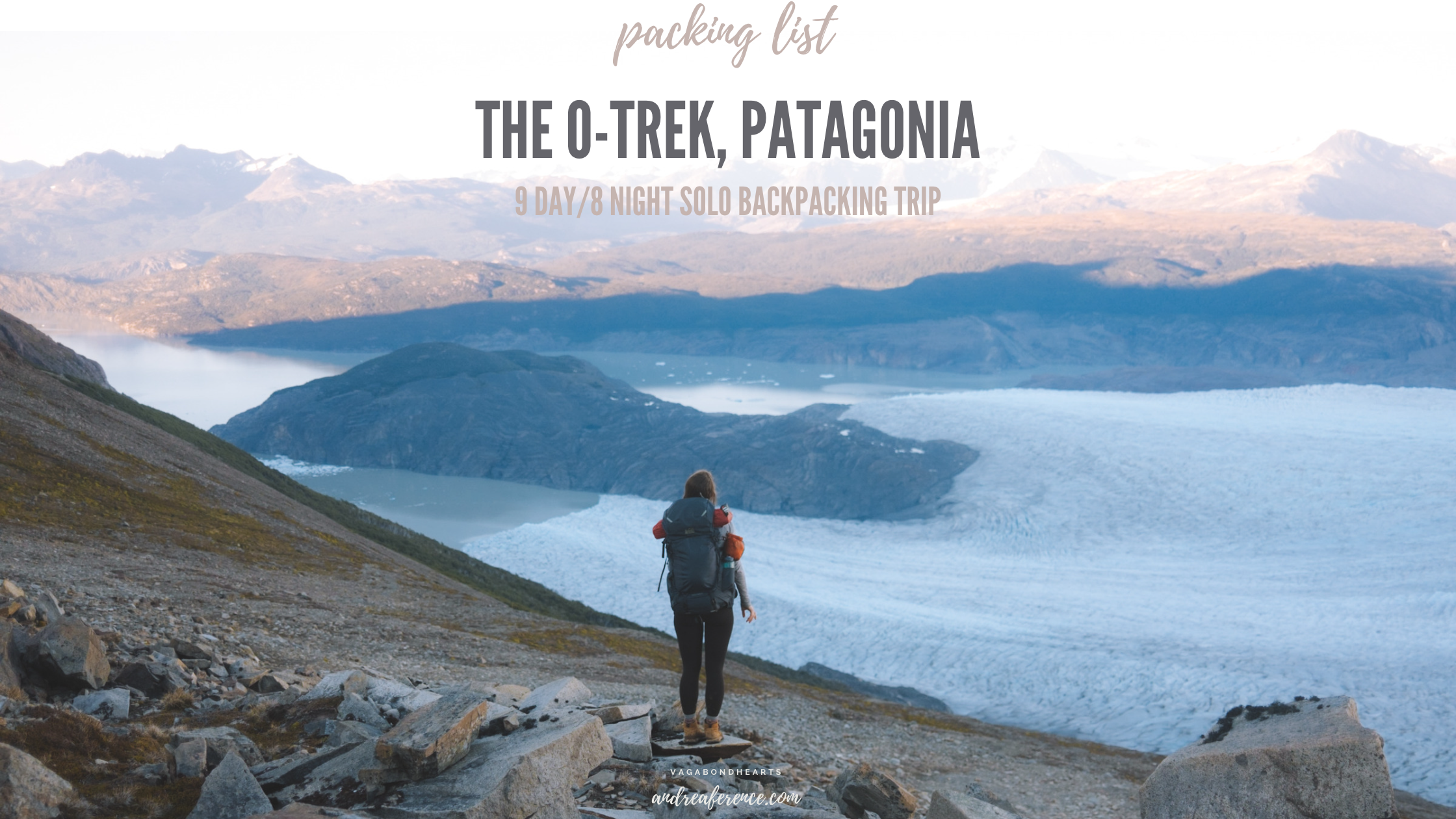
Camping vs Rifugios
There is a caveat here that one of the campgrounds on the back side of the hike (Perros) does not have a Refugio option. For that site you will have to choose between the first and third options below.

Option One: Camping
I booked this trip with the intention of experiencing independent camping the entirety of the circuit and as I mentioned, my plans changed. If I were solo backpacking this again, I would personally chose to camp over the rifugios both for financial reasons (you will be able to see that below) but also for the fact that I don’t enjoy sharing sleeping quarters with strangers. Along the Haute Route I found the huts to be really loud and also far too warm for my liking. There are three different groups (Fantastico Sur, Vertice Patagonia and CONAF (the National Park Services)) that run campgrounds along the O-Circuit and each must be booked independently and offer different services.
Fantastico Sur:
Chileno, Frances, Los Cuernos, Seron, Los Torres
Campsite (per person per night based on double occupancy) : US$21
Single occupancy supplement: US$11Reserve Here
Vertice Patagonia:
Dickson, Los Perros, Glacier Grey, Paine Grande
Campsite (per person, per night): US$9.00Reserve Here
CONAF (National Park Services):
Paso, Italiano
These two campgrounds are free but must be booked in advance. They are, at the time of writing this blog, closed for renovations but are rumoured to be opening for the 2023/2024 season. Booking will be here when available. *note this is a Spanish only website
NOTE: You can only camp in specially designated camping sites and that “wild” camping is strictly prohibited in Torres del Paine.

Option Two: Rifugios
Refugios, also known as mountain huts or mountain hostels, are available at all but four of the campgrounds (Seron, Perros, Passo and Italiano) - they are significantly more expensive but using these will mean that you do not need to carry a tent, sleeping bag and sleeping mat - saving you a significant amount of weight. If this sounds more your speed (who does not love a lighter backpack) you will still need to camp at Seron and Perros(the two CONAF sites can easily be skipped), however, you are able to use option 3 below for those two nights and can check out my W-Trek (fully supported) packing guide below for a better idea of what to bring with you.

Option Three: Somewhere in the middle
This is the middle ground option that a lot of first time thru-hikers I met used (especially during COVID times in which renting a bed in a Refugio forced you to book the entire room and got very expensive very quickly). The O-Circuit offers the ability to rent a tent at each of the campsites. I included the breakdown of cost below. This option saves a lot of time and weight without the need to set up, take down and carry around a tent with you. Also, with Patagonia’s unpredictable weather conditions renting a tent will eliminate your chances of having your tent damaged from the wind and there would be no possibility of having to pack up a wet tent after a stormy night.
On top of the cost of the campsite, you will have to pay an additional fee for the tent (it will already be set up and ready to go when you get there) and you can also choose to rent sleeping bags and mats at each of the locations or bring your own. Renting everything set up will be and easier and lighter option (especially if you don’t already own the gear) but bringing your own sleeping bag and mat ensures you have gear you like that is warm enough, and also saves a little bit of money in the long run.

Full board vs self supported
Most all of the campsites offer a small convenience store with food that I would consider “emergency calories” including ramen noodles, tortillas, pasta, beans, candy bars and chips. Cold drinks - beer, wine, Pisco Sours and soda. As well, most offer feminine hygiene products, basic first aide and condoms (I include that because it made me laugh every time I saw them hiding on the shelf behind the clerk). In a pinch you could get by with this food - however, there are two main ways to eat on the trail. Full board or fully self supported (or somewhere in the middle depending how you feel).
Full Board
All of the campsites with the exception of Perros, have a kitchen that offers dinner (these varied but were surprisingly delicious ), breakfast (typically eggs, ham, bread and cereal with coffee and tea) and boxed lunch for your day’s hike (a sandwich(mostly fish-and the vegetarian option just tomato, cheese and cucumber), a protein bar, a bag of trail mix, a piece of fruit and sometimes a juice box). When you check in for the night you will be asked about restrictions. FYI - I learned this is asking if you are vegetarian or celiac. You do not need to stay at the huts to order full board. Note: Perros you will need to bring your own food as they do not have a kitchen - I would recommend stopping by your local REI and picking up a dinner and a breakfast (and a few instant coffees) and then packing extra snacks for the day four hike . You can rent a cooking stove at Perros - but honestly if you ask any other camper for some hot water they will gladly share.
Self Supported
This is like most backpacking in North America. You bring your stove, your dehydrated meals (bring these from N.America with you-they are super hard to find in Chile) and a long handled spoon. You can purchase fuel in Puerto Natales (just ensure it has the threaded style top to work with your N.American stove). Personally I would recommend this if you have the space in your backpack and are okay carrying the weight. I found that the full board options were just really not enough calories for me and not nutritionally balanced - I ended most days at least moderately hungry (and I did supplement snacks) and got tired of the amount of bread I was eating. I could tell that my body was not getting nearly enough protein. The only annoying part about this would lunch, as camp stoves are only permitted at campgrounds in designated cooking areas. There were a few bigger fires that forced this rule.

What to expect at each rifugio
Each of the campgrounds offer a variety of services, I have broken them up into the three providers; Fantistico Sur, Veratice Patagonia and CONAF.
There is no cell phone service anywhere in the park, but most of the rifugios have wifi for purchase; the cost varied slightly, but was generally 1h for 8USD, 3h for 11USD, 8h for 13SUD or 10h for 15USD. It says it is payable by PayPal but PayPal will not actually work - so you have to use a credit card via the PayPal website. It is confusing to explain, but will make sense once you try it. The wifi is also typically cut off at night. Did I spend $120USD on wifi during this hike… yes, yes I did.
There are showers at most of the campsites, however not all of them have hot water and some only have hot water for a few hours. I did not shower until day five because of this. The front side (the W) has a lot more reliable services.
Most of the back side campgrounds (Séron, Dickson, Perros) open for the season November 1st with the front side (Grey, Paine Grande, Frances, Cuernos and Chileno) opening in late September or early October for the season. I do not have the dates for the CONAF sites as they have not been open since 2019 and are not slated to open again until late 2023.




Planning:
Self Booking
This is absolutely doable, a number of the people I met on the O-Circuit self booked their hike. It takes a considerable amount of planning and prep work and will be easier if you speak Spanish. You will need to contact the two (or three when CONAF re-opens) organizations to book and navigate available dates. As travel picks up this will become more challenging - so if you are looking to self-book I would recommend sooner rather than later and booking as far in advance as possible. This is not a hike you can book the day or week off - even a month out when my trip was booked most of the rifugios were fully booked and even one of the campgrounds was full.
Guided or Self- Guided
Guided
If this is your first big. multi day hike, your first solo trip or you are looking to enjoy the trip and worry less about where to go and when to leave - absolutely get a guide. They will take care of everything (especially on the back side with needing to camp and cook at Perros), teach you all about the history of Patagonia and Torres del Paine, will enable you to visit Puma Glacier and show you 101 things you would otherwise never notice.
Self-Guided
If you are more experienced (read: have backcountry camped at all in North America) and/or are looking for a challenge and some solitude this is for you. This trail is well maintained and easy to follow - I downloaded the offline maps on the apps maps.me and MapOut and ensured I had my Garmin inReach with me. It was never more than an hour or two that I was truly alone, and being alone was by choice. I do not believe you need a guide for this circuit.
When researching for this blog I realized how challenging it is to find even the most basic of information on availability, options and booking. There are absolutely less expensive ways to visit Patagonia and to do this hike, but if you are looking for some peace of mind and have the money to spend to save time, energy and a multitude of headaches.
Additional resources
Chile Immigration (with COVID requirements and restrictions) : Find more information here
Torres del Paine National Park : Book here
Fantastico Sur Camping and Rifugios : Book here
Vertice Patagonia Camping and Rifugios : Book here
CONAF Park Services and Campground Information : Available here
Best weather resource : Wind Guru
What to back with you (full camping):
Apps to download:
Where to stay before and/or after the O-circuit:
Recommended Hotels in Puerto Natales:
*Please note that some of the links above are affiliate links, and I may earn a small commission on any purchase made - at no additional cost to you. As always, all ideas and opinions expressed in this post are entirely my own. Thank you for your support!










